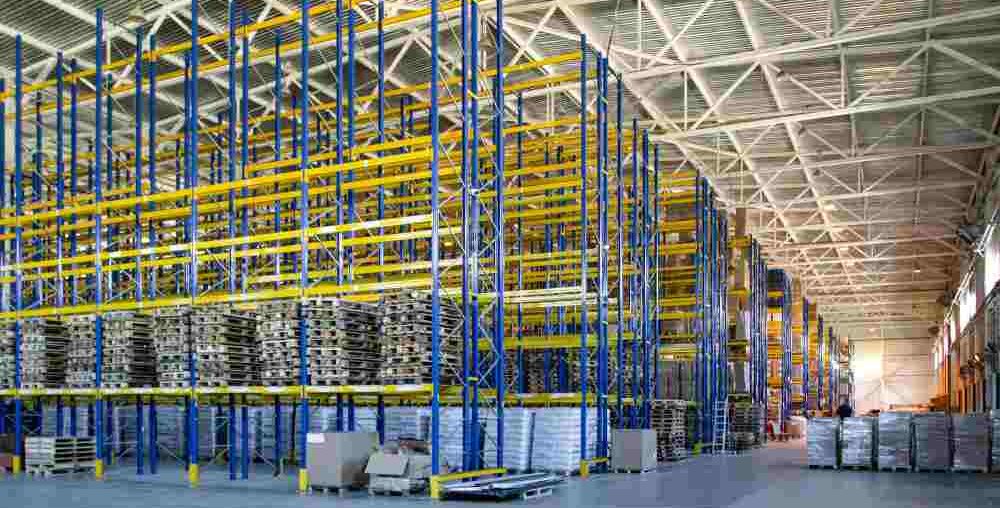Pallet racking systems are pivotal in organizing warehouses and optimizing storage capacity. They are essential for businesses of all sizes, particularly those with significant inventory management needs. However, the cost of installing a pallet racking system can vary widely depending on factors such as the type of racking, materials used, and the warehouse’s specific requirements. In this article, we’ll break down the main factors influencing pallet racking system costs and the types of systems available and provide insights into how to budget for this crucial investment.
Factors Influencing the Cost of a Pallet Racking System
The cost of a pallet racking system can vary widely, from a few hundred to several thousand dollars, depending on various factors. Understanding these factors can help businesses make an informed decision that balances quality with affordability.
1. Type of Pallet Racking System
There are multiple pallet racking systems, each designed to meet different storage needs. The type of racking system selected significantly influences the cost:
- Selective Racking: This is the most common and cost-effective option. It allows easy access to each pallet but generally requires more floor space.
- Drive-in Racking: This system is ideal for high-density storage and allows forklifts to drive directly into the racks. Due to its specialized design, it costs more than selective racking.
- Push-Back Racking: This racking system allows pallets to be stored in a slightly inclined position. When a new pallet is loaded, the previous pallets get pushed back. Due to the rails and added hardware, push-back racking is more expensive.
- Cantilever Racking: Designed for long, bulky items, this system is more costly due to its structure and the need for stronger materials.
- Drive-Through Racking: This system allows access from both sides and is suitable for high-turnover items. Like drive-in racking, it requires a larger upfront investment.
2. Material and Construction Quality
The materials used for constructing pallet racks impact the cost. Most racking systems are made from steel, but the steel’s quality, thickness, and finish affect the price. Higher-quality, rust-resistant steel racks will be more expensive but offer greater durability and longevity. Galvanized steel racks, for example, are more resistant to corrosion and wear, making them ideal for cold storage or humid environments, though they cost more than standard steel racks.
3. Load Capacity Requirements
The weight capacity of the racks is another crucial factor. Racks with heavier loads require reinforced materials and stronger construction, leading to higher costs. Businesses with lighter loads can save on costs by opting for racks with lower weight limits.
4. Warehouse Layout and Customization
The complexity of the warehouse layout and any customization required can also affect costs. If the warehouse has irregular spaces or unique requirements (such as specific heights or aisles), customization of the racks may be necessary, which can drive up prices. Furthermore, installing a system with multiple levels or mezzanine platforms for additional storage will increase the cost.
5. Installation Costs
While some businesses may install their pallet racking system independently, professional installation is recommended for safety and efficiency. Installation costs will vary depending on the system’s complexity and the region’s labour rates.
Estimating Pallet Racking System Costs
Here’s a general breakdown of the costs associated with various pallet racking systems. Note that these are estimated averages and can vary based on the factors mentioned above:
- Selective Racking: $50–$80 per pallet position
- Drive-In Racking: $70–$120 per pallet position
- Push-Back Racking: $80–$130 per pallet position
- Cantilever Racking: $150–$200 per linear foot
- Drive-Through Racking: $90–$140 per pallet position
These costs include only the racks and exclude installation, additional accessories, and permits.
Additional Costs to Consider
In addition to the cost of the racking system, there are several other expenses to consider when planning a pallet racking setup:
1. Accessories
Accessories such as safety guards, column protectors, and backstops add to the cost but enhance the system’s safety and functionality. Wire decking is another common addition, providing a more stable pallet base, especially for smaller or non-standard items.
2. Permits and Compliance
Depending on local regulations, permits may be required for the racking installation. Compliance with fire and safety standards can also increase the overall cost.
3. Maintenance and Repairs
Over time, pallet racking systems may require maintenance or repairs. Regular inspections are recommended to ensure safety, and any damaged components should be replaced promptly. Maintenance costs vary, but budgeting for periodic inspections and repairs is essential.
4. Upgrades and Expansions
You may need to expand or upgrade your racking system as your business grows. While this is an additional cost, investing in a scalable system from the start can reduce future expenses associated with expansion.
How to Budget for a Pallet Racking System
Budgeting for a pallet racking system requires careful planning. Start by analyzing your storage needs, inventory turnover, and warehouse layout. Determine which type of racking system is best suited for your business, considering both current needs and potential future growth.
Here’s a step-by-step approach to budgeting:
- Identify Storage Requirements: Evaluate your inventory type, weight, and turnover rate to determine the ideal racking system.
- Get Multiple Quotes: Contact different suppliers to get quotes on the types of racking you’re considering.
- Plan for Installation: Include installation costs in your budget. Professional installation ensures safety and may even be required for compliance.
- Allocate for Accessories: Determine which accessories (e.g., safety guards, wire decking) are necessary.
- Include Maintenance and Permits: Account for ongoing maintenance and any permit costs if applicable.
FAQs About Pallet Racking System Cost
1. What is the average cost of a pallet racking system?
The cost of a pallet racking system varies based on the type of racking, materials, and warehouse requirements. Basic selective racking can cost around $50–$80 per pallet position, while more complex systems like push-back or drive-in racking range from $80–$130 per pallet position.
2. How can I reduce the cost of a pallet racking system?
Opt for selective racking to reduce costs, which is generally more affordable. You can also consider purchasing used racks as long as they are in good condition and meet safety standards. Working with a supplier to identify the optimal rack configuration for your needs can prevent overpaying for unnecessary features.
3. Are installation costs included in the price of a pallet racking system?
In most cases, installation costs are separate from the price of the racking system. Professional installation fees vary depending on the complexity of the setup and regional labour costs. Always confirm with the supplier whether the installation is included or needs to be budgeted separately.
4. How often do pallet racking systems need maintenance?
Pallet racking systems require regular inspections to ensure they remain safe and functional. Annual inspections are typically recommended depending on the frequency of use and load weight, although high-traffic warehouses may require more frequent checks. Maintenance costs will vary, but it is advisable to set aside a small budget annually for repairs and replacements.
5. Is investing in high-quality materials for a pallet racking system is worth?
Yes, investing in high-quality materials, especially if storing heavy loads, can enhance the durability and safety of the racking system. High-quality steel racks may cost more initially but offer better resistance to wear and tear, especially in demanding environments. This investment can save money on repairs and replacements in the long run.
Conclusion
A pallet racking system is a critical investment for businesses that require organized, efficient storage solutions. While the cost varies based on multiple factors, understanding these can help companies to select a system that meets their needs and budget. Whether you opt for a selective, push-back, or drive-in racking system, considering future growth, load capacity, and warehouse layout can ensure you choose the most cost-effective solution.




